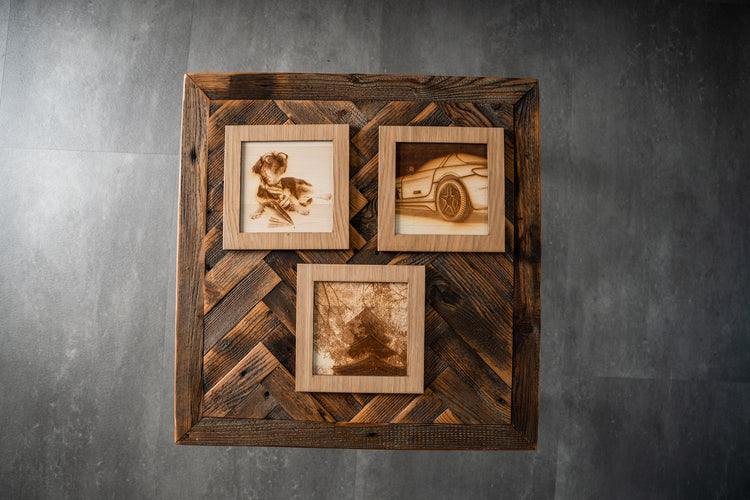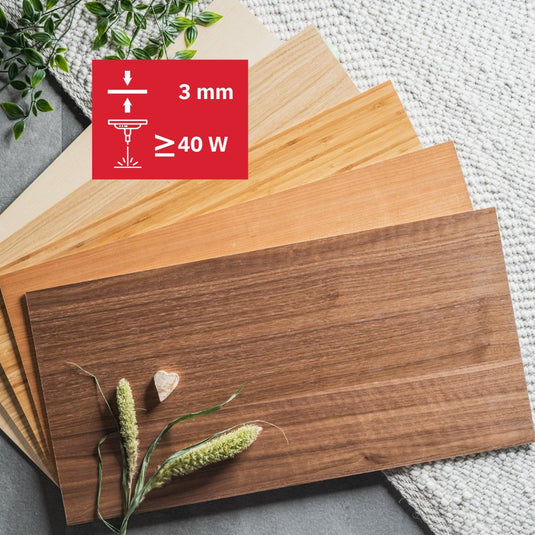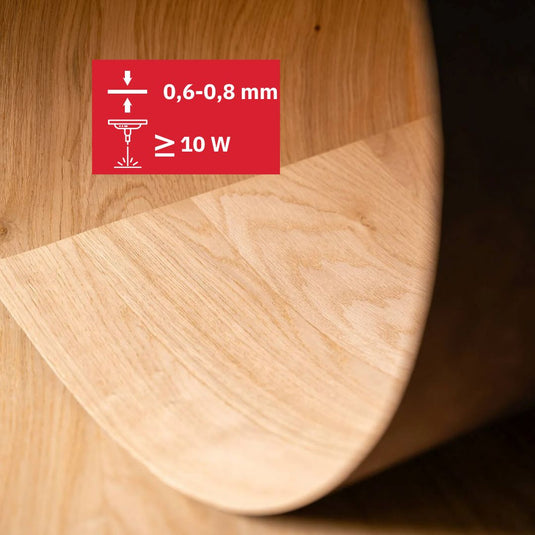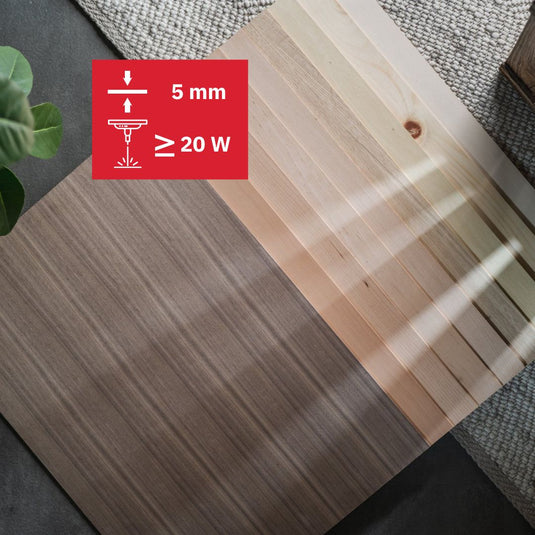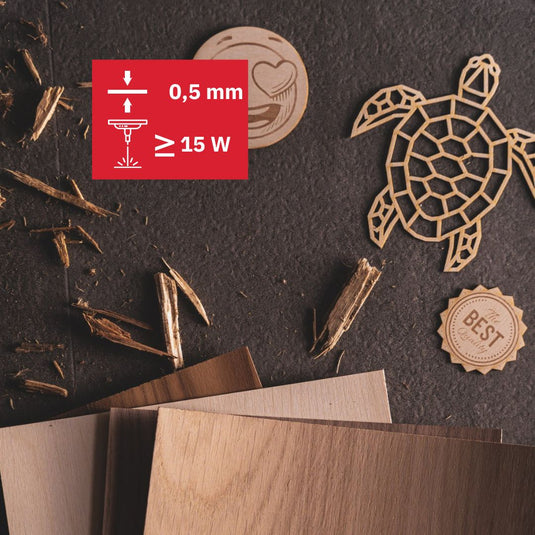Milling Engraving vs. Laser Engraving: The Ultimate Comparison for Photo Engravings on Wood
In the world of woodworking, there are numerous techniques to engrave images and designs into wood. Among these, milling engraving and laser engraving are two of the most popular methods. But which method is better suited for your projects?
What is Laser Engraving?
Laser engraving uses a high-intensity laser beam precisely focused on the wood surface. The laser beam removes or burns the top layer of the material, creating an image or design. This method is known for its high accuracy and detail fidelity.

Advantages of Laser Engraving
- Precision: Laser engravings offer exceptionally fine details and can easily engrave complex designs and fine lines.
- Speed: The process is generally faster, as the laser can work in a single pass without needing to remove material layer by layer.
- Minimal Post-Processing: Surface finishing after engraving is minimal, as the laser typically produces clean edges and less material removal.
- Versatility: Besides wood, laser engraving can also be applied to other materials such as plastic, glass, and metal.
Disadvantages of Laser Engraving
- Limited Depth: Laser engraving usually produces shallower engravings. It is less effective for deep designs or 3D effects.
- Heat Impact: The laser can leave discoloration or burn marks on the wood, especially on sensitive woods.
What is Milling Engraving?
Milling engraving, on the other hand, uses a mechanical milling tool controlled by a CNC machine. This machine cuts the wood layer by layer to create the desired image or design. Milling allows for different depths and dimensions to be created.

Advantages of Milling Engraving
- Deeper Engravings: Milling can produce deeper and more pronounced designs, including 3D effects that are harder to achieve with laser engraving.
- Textured Surfaces: Milling engraving can create textures and patterns that give the wood an interesting depth.
- Durability: Since material is mechanically removed, the results are generally more resistant to wear.
Disadvantages of Milling Engraving
- Complexity and Time Effort: The milling process can be more time-consuming, as multiple passes may be necessary to achieve the desired details and depths.
- Less detail fidelity: Although milling engravings can create deeper designs, they are often not as precise as laser engravings, especially with very fine details.
- Post-processing required: The surfaces can be rough and may require post-processing to achieve a smooth, appealing surface.
Comparison of the two methods
|
Criterion |
Laser engraving |
Milling engraving |
|
Detail accuracy |
Very high |
Good, but less precise |
|
Processing speed |
Fast |
Slow, multiple passes required |
|
Engraving depth |
Flat |
Deep, including 3D effects possible |
|
Material variety |
Wood, plastic, glass, metal |
Mainly wood |
|
Surface treatment |
Minimal required |
Post-processing often necessary |

Conclusion
The choice between milling engraving and laser engraving depends on the specific requirements of your project. If you need highly detailed, fine designs or quick results, laser engraving is often the better choice. It is ideal for personalized gifts, signs, and other projects where precision is required.
A crucial factor in engravings is choosing the right type of wood, as different types of wood have varying properties that can significantly influence the engraving result. The right type of wood not only ensures sharp contours but also an appealing appearance and durability of the engraved material.
If, on the other hand, you aim for deep, textured designs with 3D effects, then milling engraving might be the right technique for you. This method is especially suitable for artworks and larger projects where a robust and durable engraving is desired.
No matter which method you choose, both techniques offer impressive possibilities for creatively designing wood surfaces. Weigh the pros and cons carefully and select the technique that best suits your project!

